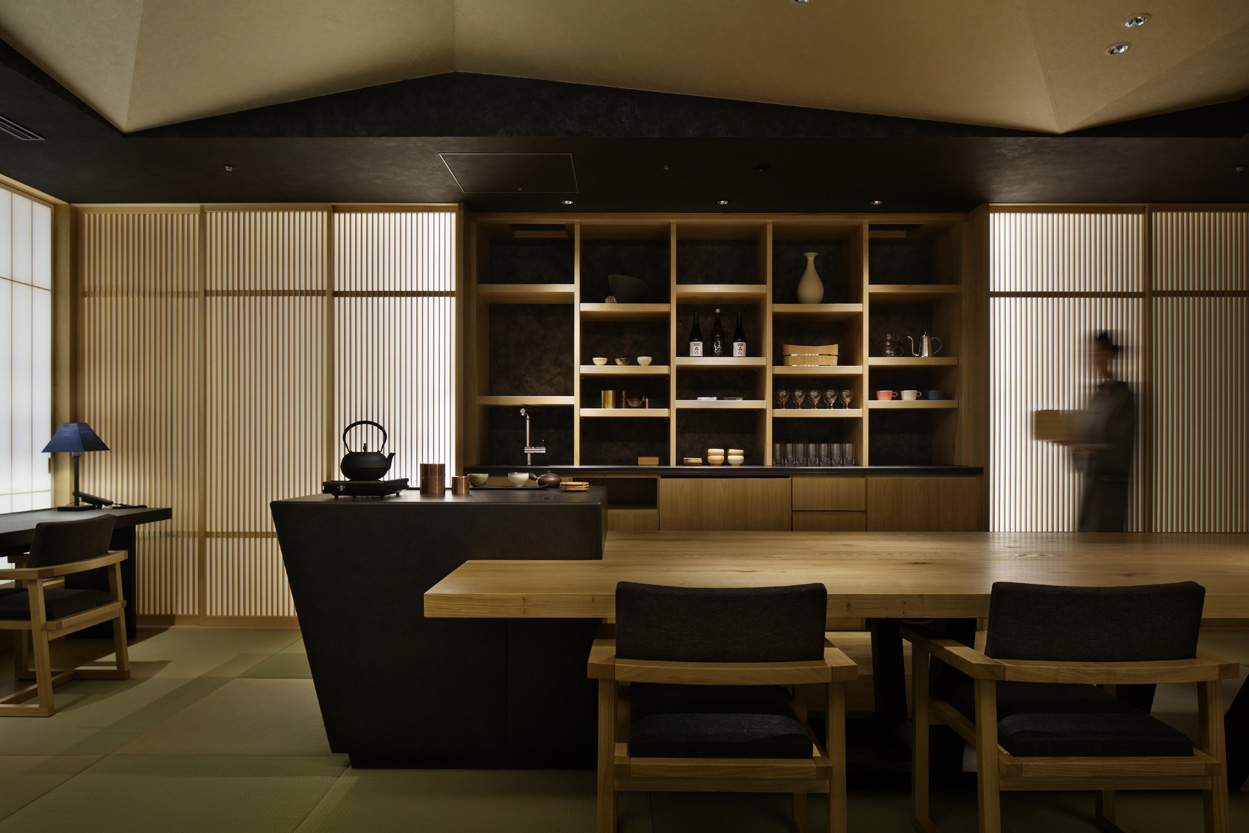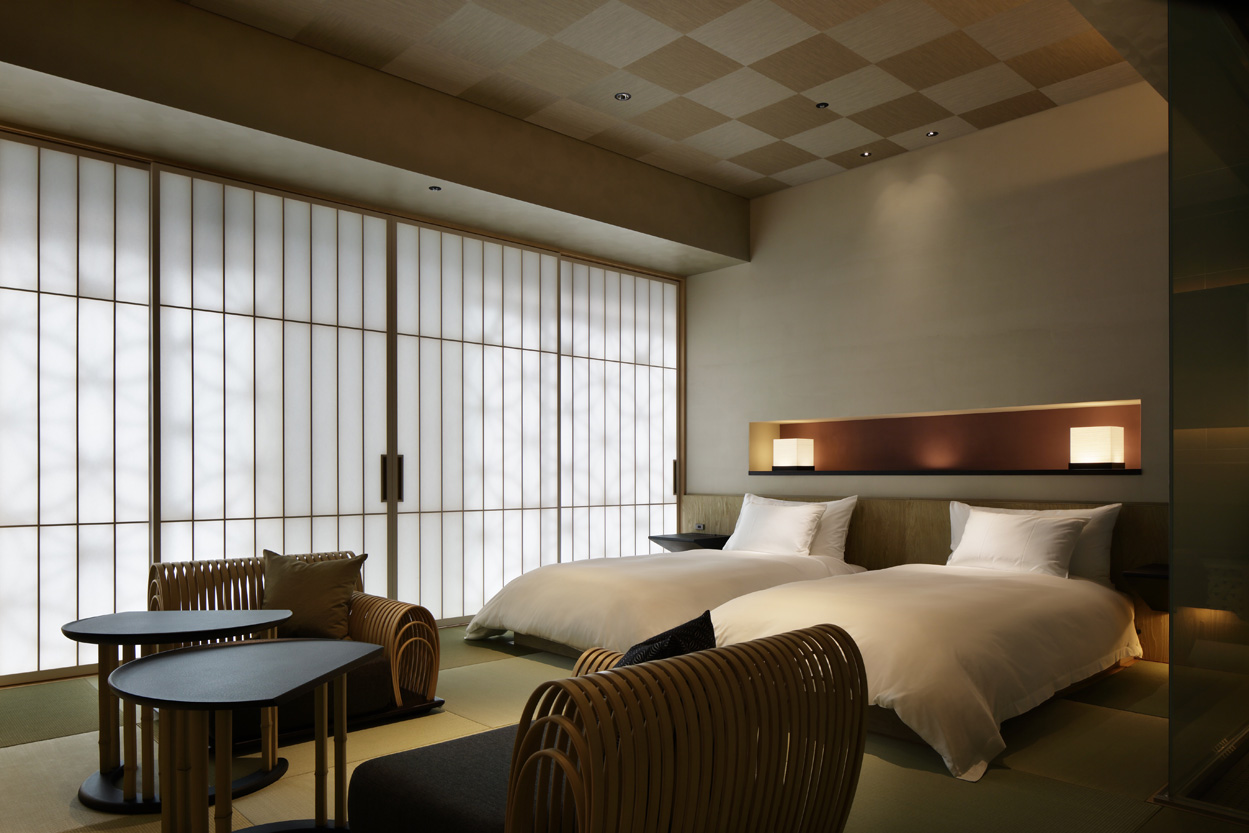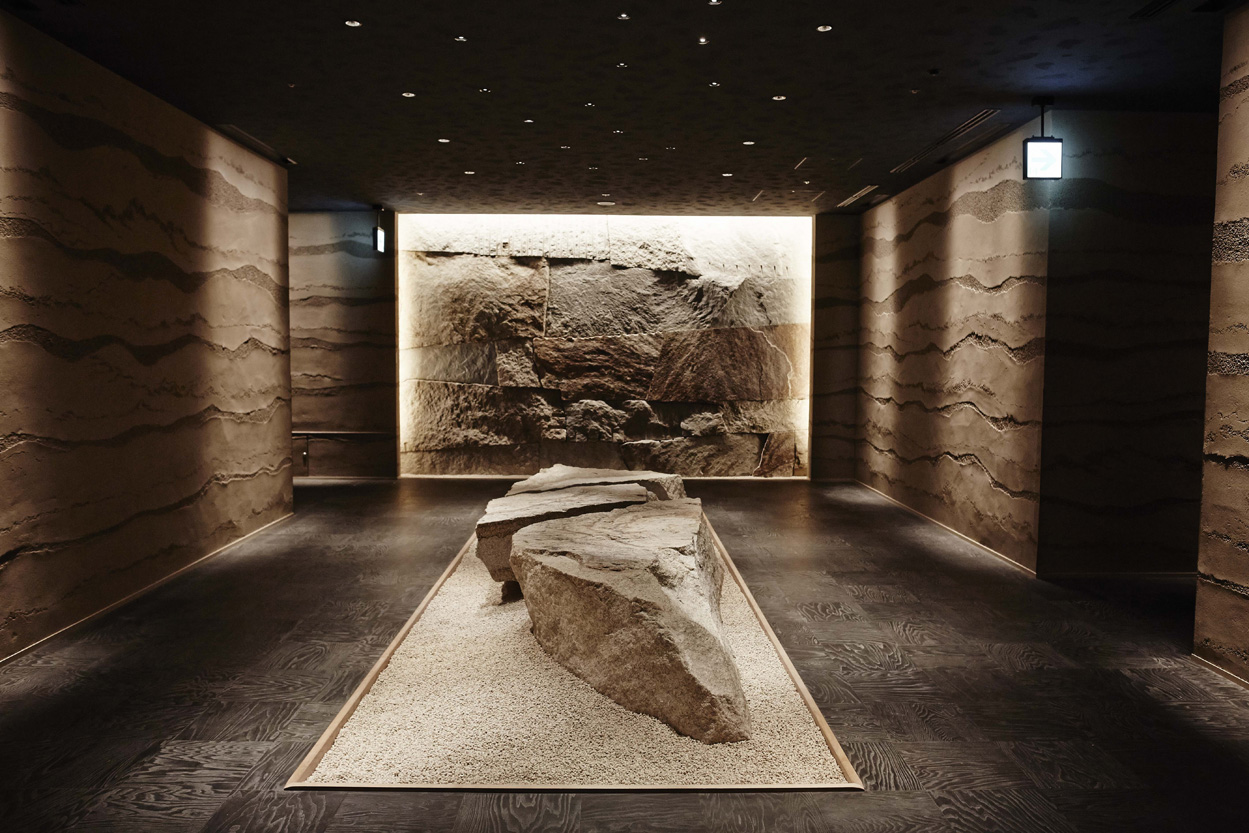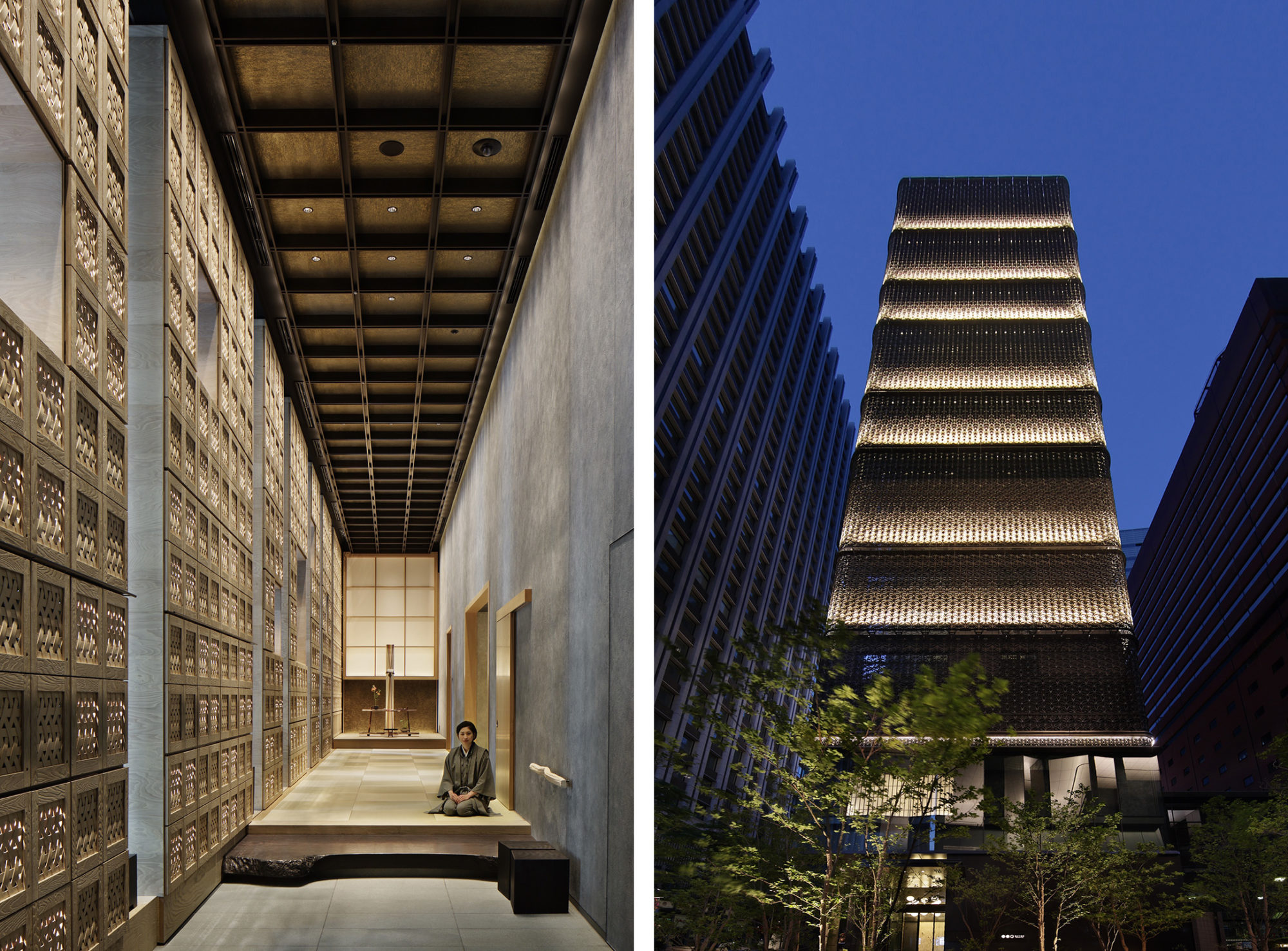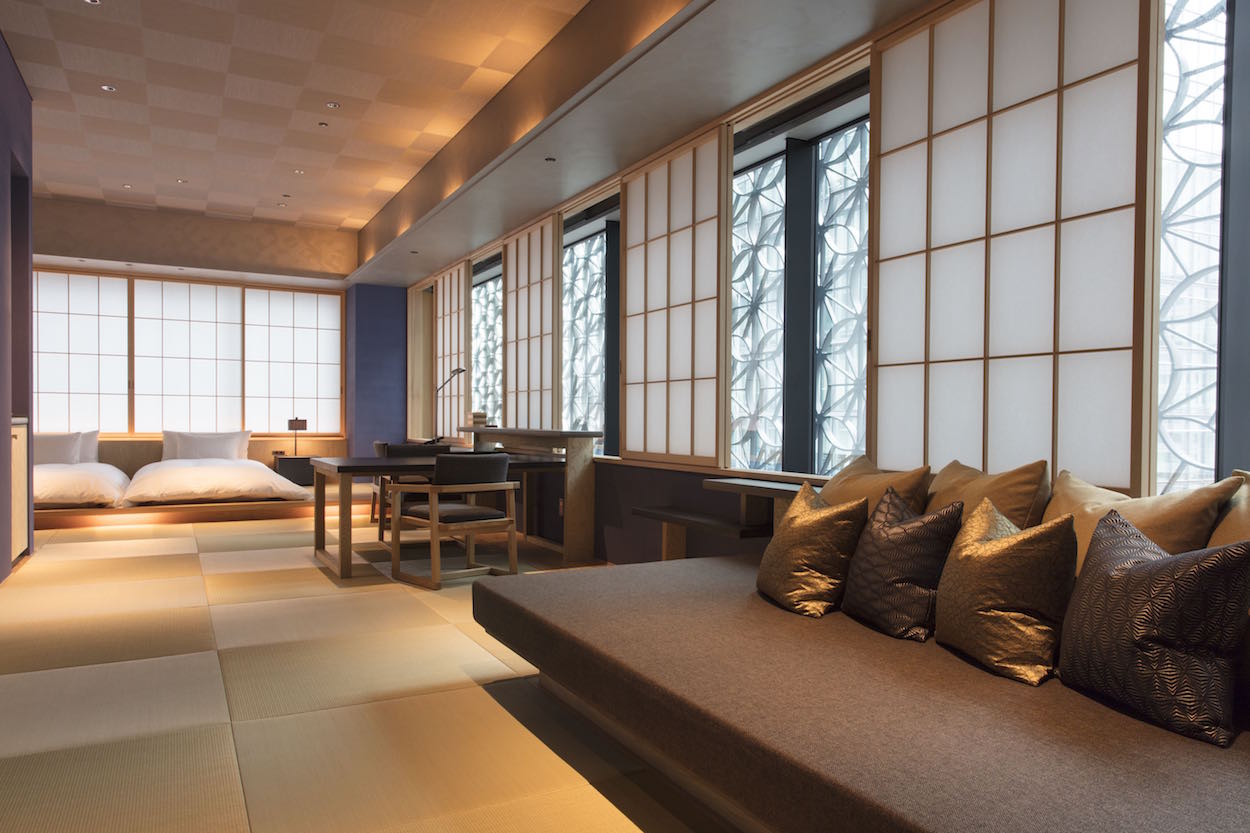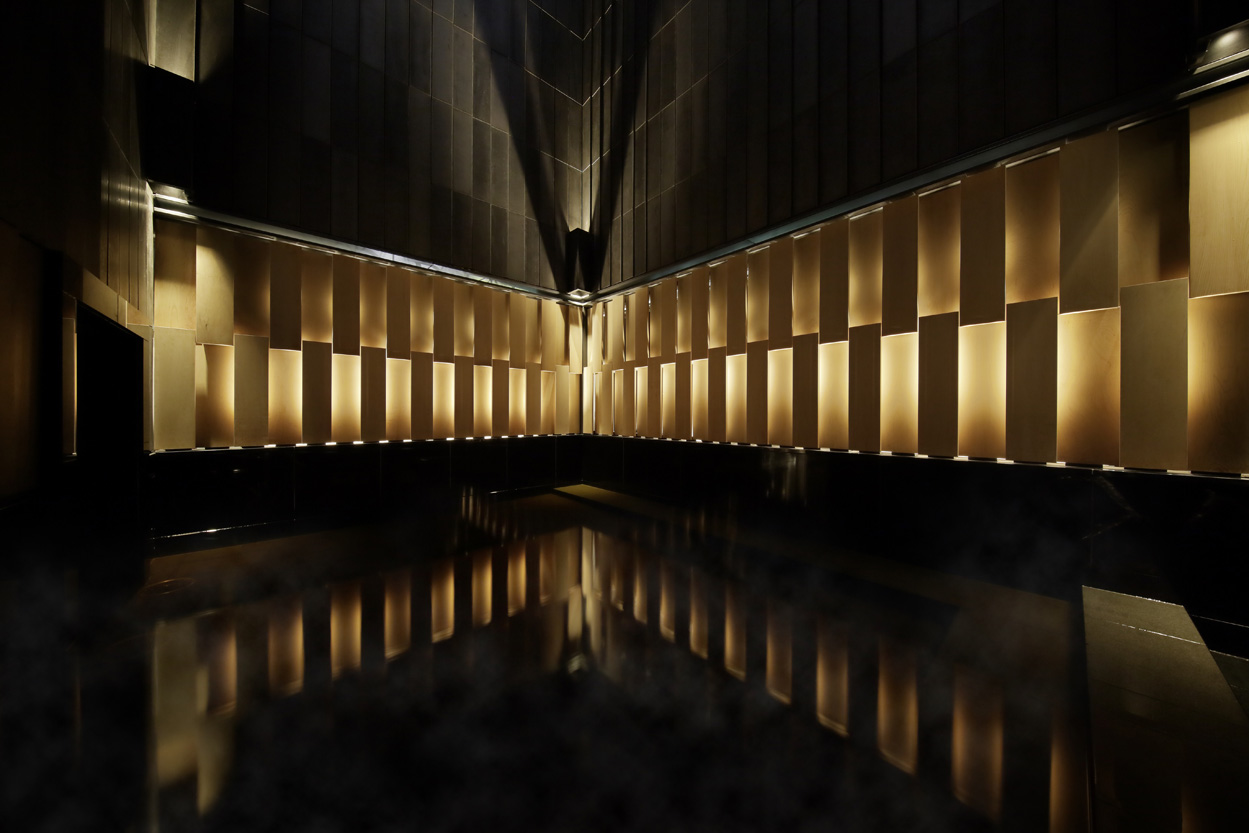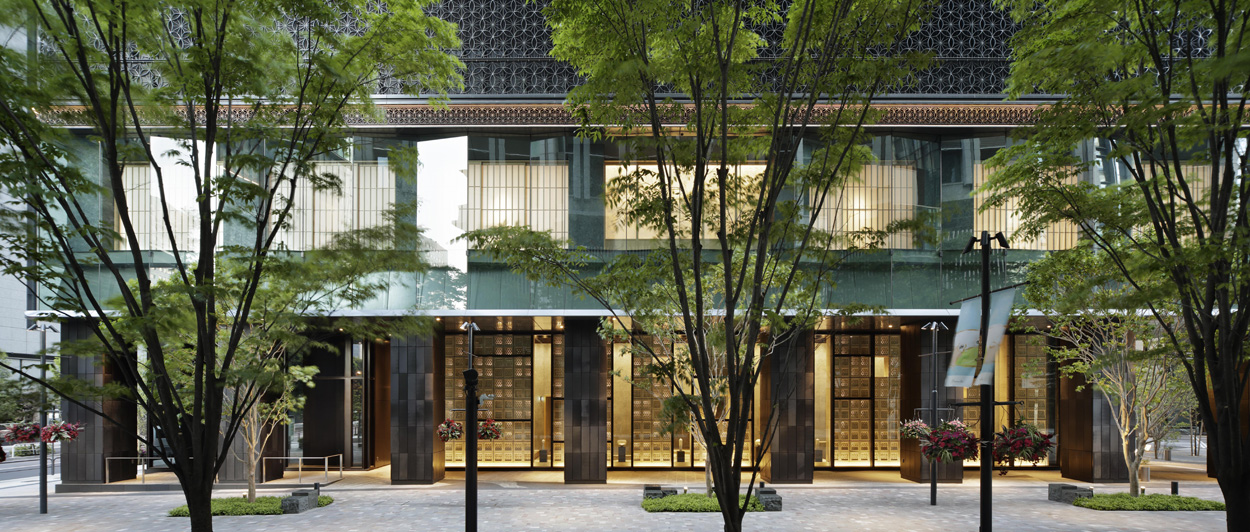Inside Hoshinoya Tokyo, it’s easy to forget that you are smack in the middle of Japan’s heaving capital. Behind a leaf-patterned facade, past woodworker Hinoki Kogei’s woven bamboo shoe lockers, the kimono-clad staff welcomes guests with a green tea into zen reception area awash in the glow of backlit washi paper. In contrast to the blockbuster five-star luxury hotels blooming atop office buildings, the city’s lone upscale ryokan is an elevated version of the classic, serenity-inducing Japanese inns that dot the countryside. Explains architect Rie Azuma, “This tranquil space is a contrast to the kinetic Otemachi district. Traditional materials, muted lighting and furnishings that encourage floor-level relaxation reflect the Japanese lifestyle.” Even the exterior of the building stands out from the monolithic towers of Tokyo. Metal lattice overlay forms a decorative double skin, both a design feature and nod to Edo–period merchants’ custom of camouflaging their wealth from the Samurai. The 84 minimalist rooms are a melange of tatami matting, shoji sliding doors, sleek bentwood chairs, and high concept glass bathrooms that can be darkened for privacy. Each floor functions as its own ryokan within a ryokan, with an ochanoma-style social space stocked with seasonal teas and Japanese confections. Breakfast—an en-suite procession of umami-forward fish, miso soup, seasoned rice balls, and fermented vegetables—is a highlight. As is the open-air rooftop onsen, situated at the bottom of a soaring chamber that frames the sky, the only connection to the ground being its water source: a thermal hot spring nearly 5,000 feet beneath the surface.
A Restful Staple of the Japanese Countryside, in Kinetic Tokyo
At Hoshinoya’s urban ryokan, the staff is outfitted in kimonos, rooms have shoji sliding doors, and there’s a thermal hot spring on the rooftop.
By Amy Tara Koch February 05, 2018